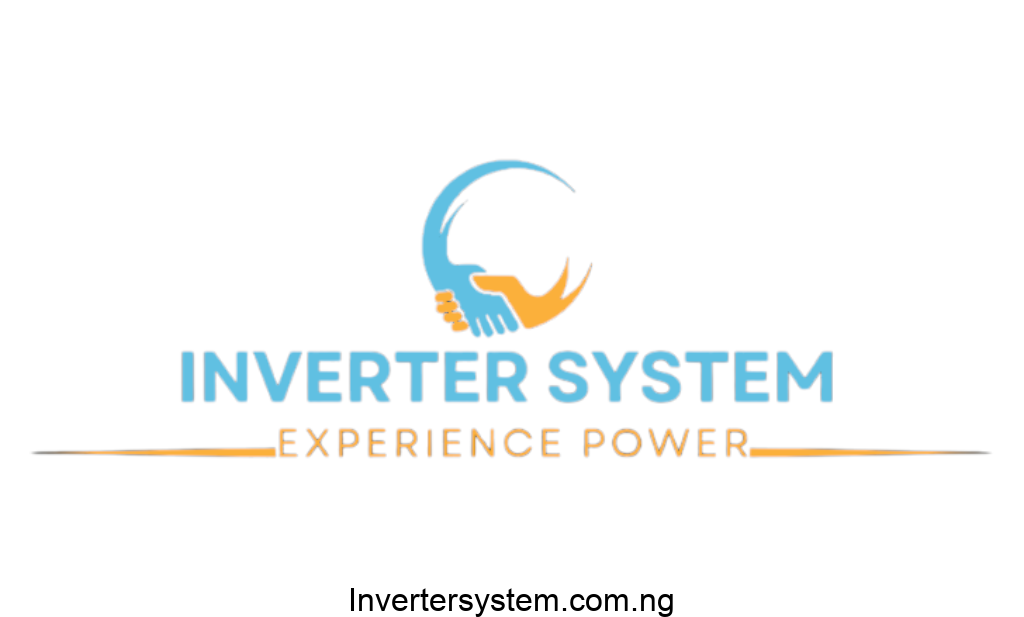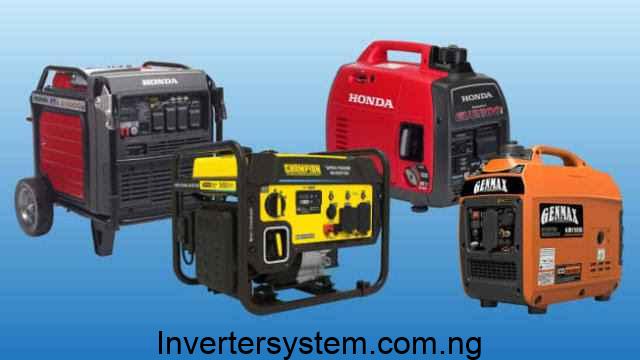Reviews: Comparing the Latest Solar Inverter Models

Whenever you are choosing a solar energy system, always remember that the solar inverter plays a critical role. It is responsible for converting the DC electricity generated by your solar panels into AC electricity, which is used by your household appliances and fed back into the grid. Given its importance, selecting the right inverter can significantly impact your system’s efficiency, reliability, and overall performance.
With a growing number of solar inverter models available, finding the perfect match for your setup can be overwhelming. This article looks further into the latest solar inverters comparison, helping you navigate the different types, features, and benefits of today’s top models. Whether you are a homeowner seeking to maximize energy savings or a business owner looking for a scalable solution, we’ll guide you through the process of choosing the best inverter for your specific needs.
Types of Solar Inverters

One of the first things to understand is the different solar inverter types. Each type is designed to meet different needs, from small residential systems to large-scale commercial applications.
- String Inverters
String inverters are the most common choice for residential installations due to their simplicity and cost-effectiveness. In a string inverter system, multiple solar panels are connected in a series, forming a “string.” The power generated by all the panels is funneled into the single inverter. One downside is that the performance of the entire system is tied to the weakest panel—if one panel is shaded or dirty, the entire string’s output is reduced. However, string inverters have been improving in recent years, with manufacturers adding features like monitoring systems to track each string’s performance independently, thus mitigating some of these issues. - Microinverters
Microinverters represent a more advanced technology, where each solar panel is equipped with its own inverter. This setup ensures that if one panel is underperforming, it does not affect the output of the others. This makes microinverters ideal for systems where shading, orientation, or panel degradation may be a concern. Microinverters are generally more expensive upfront but can deliver higher overall energy yields, especially in complex installations. They also provide detailed monitoring data, allowing homeowners to track the performance of each panel individually. - Central Inverters
Central inverters are typically used in commercial solar inverters or utility-scale solar farms. They function similarly to string inverters but on a much larger scale. In a central inverter setup, large groups of solar panels feed into a high-capacity inverter that converts the power for large energy needs. While central inverters are cost-effective for large projects, they share a similar drawback with string inverters—performance can be affected by the lowest-performing panels in the array. However, their ability to manage large volumes of electricity efficiently makes them ideal for industrial applications. - Hybrid Solar Inverters
Hybrid solar inverters, also known as multi-mode inverters, offer flexibility by allowing integration with battery storage systems. These hybrid solar inverters can work in both grid-tied and off-grid systems, managing power flow between the solar panels, batteries, and the grid. This feature makes them an excellent choice for homeowners or businesses that want to store excess solar energy for use during nighttime or power outages. The hybrid inverter’s ability to switch seamlessly between different power sources also makes it future-proof, particularly for those considering adding battery storage later.
Key Features to Consider in Solar Inverter Models

Selecting the right solar inverter involves looking at several important features that directly affect how well the system operates and how long it lasts.
- Solar Inverter Efficiency
The efficiency of a solar inverter is one of the most crucial factors in maximizing energy production. High-efficiency inverters, such as those from SolarEdge or Fronius, ensure that more of the DC electricity generated by your panels is converted into usable AC power. Efficiency ratings typically range from 95% to 99%, with some energy-efficient solar inverters offering even higher performance under optimal conditions. A 1% difference in efficiency might not seem like much, but over the lifetime of your system, it can result in significant energy savings. - Advanced Solar Inverters
Today’s advanced solar inverters come equipped with smart technology, offering enhanced capabilities such as remote monitoring, grid support, and automatic fault detection. These smart solar inverters allow users to track real-time performance data via apps or web interfaces, providing a clear view of energy production, system health, and even shading or temperature issues. Inverters with integrated smart technology also tend to support bi-directional communication with the grid, allowing for more sophisticated energy management, such as participation in demand response programs. - Solar Inverter Output & Power Rating
Matching the inverter’s power rating to your solar panel system’s output is critical. If the inverter is too small, it will limit the amount of electricity the system can produce, wasting potential energy. Conversely, if the inverter is oversized, it could be an unnecessary expense without additional benefit. Calculating the appropriate solar inverter output requires taking into account your solar panel array’s total wattage, local climate conditions, and expected energy use patterns. Most manufacturers provide detailed guidelines to help ensure the inverter is correctly sized for the system. - Battery Backup Compatibility
The ability to integrate battery storage is becoming an increasingly important feature for many solar users. Solar inverters with battery backup allow for the storage of excess solar energy, which can be used during periods of low sunlight or during grid outages. Some of the best hybrid inverters also provide uninterrupted power supply (UPS) capabilities, ensuring continuous power for critical loads. Battery-ready inverters, like those offered by Tesla and LG, make it easy to add storage at a later date, providing flexibility for future energy needs.
Comparative Review of Popular Solar Inverter Models

There is no shortage of options when it comes to selecting the best solar inverter models. Below, we review some of the top contenders from leading manufacturers, focusing on their key attributes, pricing, and overall performance.
- SMA Sunny Boy
One of the most trusted names in the industry, the SMA Sunny Boy is known for its robust performance and high efficiency. It offers smart solar inverter capabilities with integrated monitoring and a flexible design that supports both string and microinverter configurations. The SMA Sunny Boy is particularly well-suited for residential systems and small commercial setups, offering a balance of affordability and advanced features. - SolarEdge HD-Wave
SolarEdge has become a market leader thanks to its innovative power optimizer technology, which ensures each panel operates independently for maximum energy yield. The SolarEdge HD-Wave inverter is compact, lightweight, and highly efficient, making it an ideal choice for homes where shading or partial panel obstructions may be an issue. Its modular design also makes it compatible with SolarEdge’s battery storage solutions, providing a clear upgrade path for future energy storage needs. - Fronius Primo
The Fronius Primo is a favorite among installers for its reliability and excellent customer support. This inverter is particularly well-suited for both grid-tied and hybrid systems. Fronius has also been at the forefront of solar inverter innovation, incorporating advanced features such as dynamic peak manager technology and integrated Wi-Fi for easy monitoring and system updates. - Huawei FusionSolar
The Huawei FusionSolar series is designed for large-scale commercial and industrial solar installations, but it’s increasingly popular in residential settings as well. These inverters offer a high-performance solar inverter solution with integrated AI-powered arc fault protection, rapid shutdown features, and robust grid compliance capabilities. Huawei’s inverters are also notable for their long solar inverter warranty and low failure rates.
Residential vs. Commercial Solar Inverters

The choice of inverter will vary greatly depending on whether it is for residential or commercial use.
- Residential Solar Inverters
Homeowners generally look for inverters that balance efficiency with affordability. Some of the most popular residential options include the SMA Sunny Boy and SolarEdge HD-Wave, both of which are known for their high efficiency and smart technology. For those seeking more energy independence, hybrid inverters with battery backup functionality, such as the Tesla Powerwall inverter, are becoming increasingly popular. These systems allow homeowners to store excess solar energy for use during peak demand periods or power outages, offering greater control over their energy consumption. - Commercial Solar Inverters
Commercial solar installations require more robust inverters capable of handling larger energy loads. Central inverters, such as the Huawei FusionSolar or Sungrow SG series, are typically used in these applications. They offer high capacity and scalability, making them ideal for solar farms, industrial complexes, and large office buildings. Commercial systems also benefit from inverters with grid support capabilities, enabling businesses to participate in demand response programs and reduce energy costs during peak times. - Energy-Efficient Solar Inverters
Both residential and commercial systems can benefit from using energy-efficient solar inverters, which minimize energy losses during the DC to AC conversion process. High-efficiency inverters not only increase overall energy production but also reduce the system’s payback period, making solar investments more attractive for homeowners and businesses alike.
Solar Inverter Brands and Market Leaders
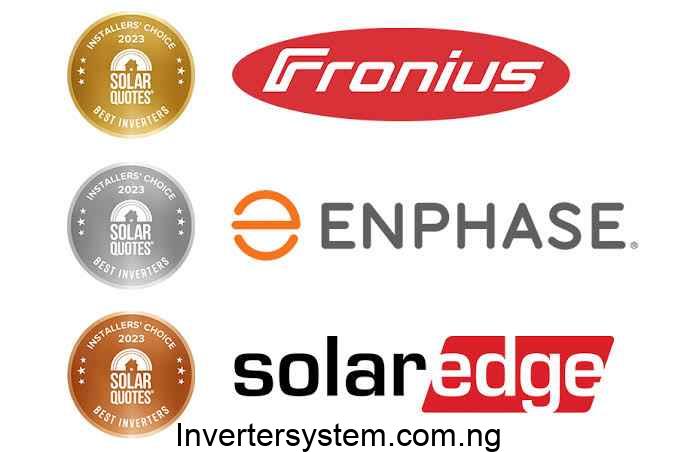
As with any technology, choosing the right brand can have a significant impact on the long-term performance and reliability of your solar energy system. Below are some of the top solar inverter brands dominating the market today.
- SMA
SMA has been a global leader in solar inverter technology for decades, known for its reliable and durable inverters. The company’s range of products, including the Sunny Boy and Sunny Tripower series, cater to both residential and commercial installations. SMA is renowned for its long-lasting performance, high efficiency, and robust build quality. Their solar inverter warranty is also one of the most comprehensive in the industry, offering up to 10 years of coverage with options to extend. - SolarEdge
SolarEdge has revolutionized the solar market with its innovative power optimizers, ensuring each panel functions independently to maximize energy output. Its HD-Wave inverters are among the most advanced solar inverters on the market, featuring compact designs and integrated smart technology for monitoring and troubleshooting. SolarEdge is especially popular in residential installations due to its focus on performance and adaptability, making it a leading name in the industry. - Fronius
Known for its blend of Austrian engineering and solar inverter innovation, Fronius stands out for its durable, user-friendly inverters. The Fronius Primo and Symo series are highly efficient and come equipped with unique features like dynamic peak management and seamless Wi-Fi connectivity. Fronius inverters are well-regarded for their advanced energy management features, making them a top choice for hybrid systems that include battery storage. - Huawei
Huawei is a major player in the commercial solar inverter market, particularly known for its high-efficiency inverters that integrate AI-powered safety features and robust monitoring capabilities. Huawei’s FusionSolar series is designed to scale across residential, commercial, and industrial installations, making it versatile enough to meet the needs of both small and large projects. - Enphase
Enphase specializes in microinverters and has built a strong reputation for creating reliable, high-performance inverters for residential installations. Their IQ series microinverters are designed to deliver the best possible efficiency by treating each solar panel individually. Enphase inverters are also easily scalable, making them a great choice for homeowners planning to expand their solar systems or add battery storage in the future. - Sungrow
Sungrow is another major player, especially in large-scale commercial projects. Their products, including the Sungrow SG series, are known for their durability, affordability, and high efficiency. Sungrow has been particularly successful in the Asian and European markets, and their inverters offer a reliable option for utility-scale solar farms and large commercial properties.
Installation, Maintenance, and Warranty Considerations

When investing in a solar inverter, it’s essential to consider not just the initial purchase price but also the installation, maintenance, and long-term support the manufacturer offers.
- Installation Costs and Complexity
Installation costs can vary based on the type of inverter you choose and the complexity of your solar system. For instance, microinverter installations tend to be more labor-intensive because each panel needs to be equipped with its own inverter. However, string inverters are simpler to install but may require more effort in systems where panel performance varies due to shading or orientation. It’s crucial to hire a certified installer to ensure the system is set up correctly, as this can impact both the performance and the warranty of the inverter. - Solar Inverter Maintenance
Solar inverters typically require very little maintenance over their lifetime. However, it’s important to monitor the system’s performance regularly, as faults can develop due to environmental factors or equipment wear. Some inverters come with self-diagnostic capabilities, alerting homeowners or installers to issues via smartphone apps or online portals. Regular cleaning and inspections are recommended, particularly for inverters installed in harsh environments where dust, dirt, or moisture might accumulate. - Warranty Terms and Customer Support
Solar inverters come with warranties that range from 5 to 25 years, depending on the brand and model. Leading manufacturers like SMA, SolarEdge, and Fronius offer extended warranties, providing peace of mind for long-term solar investments. Be sure to review the warranty terms carefully, as they often include specific requirements for installation and maintenance. Manufacturers like SMA and Huawei also offer comprehensive customer support, ensuring that any issues are quickly addressed.
Cost of Solar Inverters and Return on Investment (ROI)
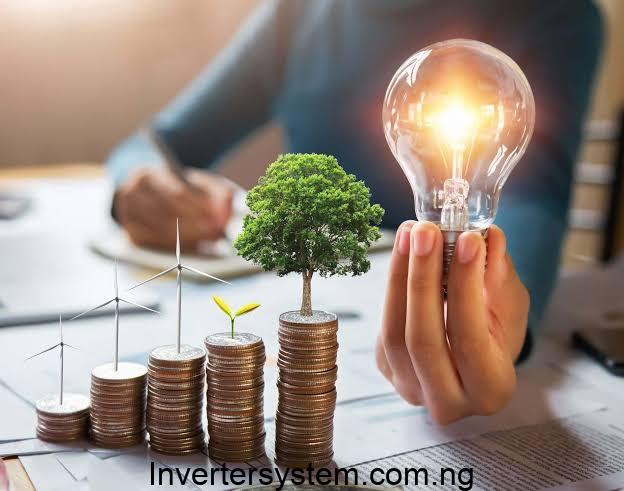
When evaluating the cost of a solar inverter, it’s important to consider not only the upfront expense but also the long-term return on investment.
- Upfront Costs
The cost of solar inverters can vary widely depending on the type, capacity, and features. String inverters are generally the most affordable option, with prices ranging from $1,000 to $2,000 for most residential systems. Microinverters tend to be more expensive, often costing $1,000 to $1,500 per panel. Hybrid inverters with battery backup functionality are typically at the higher end of the price spectrum, with costs starting around $2,000. - Energy Savings and ROI
While solar inverters represent a significant upfront investment, they offer substantial long-term savings by maximizing the efficiency of your solar panels. High-efficiency inverters, such as those offered by SolarEdge and Fronius, can help reduce energy losses during conversion, increasing the overall energy output of your system. Over time, these efficiency gains translate into lower electricity bills and a quicker payback period. Systems with integrated smart technology can also participate in demand response programs, earning additional savings or income from the utility. - Total Cost of Ownership
The total cost of ownership includes the upfront price, installation fees, maintenance, and potential inverter replacements over the system’s lifetime. High-quality inverters with long warranties, like those from SMA or Enphase, may have a higher initial cost but offer better value due to their durability and low maintenance needs. Factoring in these costs will give you a clearer picture of your solar system’s long-term financial performance.
The Future of Solar Inverter Technology
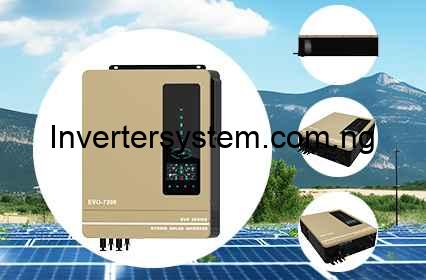
As solar energy adoption continues to grow, the technology behind solar inverters is evolving rapidly to meet new challenges and opportunities.
- Increased Integration with Battery Storage
The integration of battery storage systems with solar inverters is becoming more common, driven by the falling cost of batteries and the rising demand for energy independence. Hybrid inverters that support seamless integration with solar batteries are set to become the new standard in both residential and commercial applications. Companies like Tesla and SolarEdge are leading the charge with innovative inverter-battery combinations that provide both energy storage and backup power. - Smart Grid and Energy Management Features
Advanced solar inverters are increasingly incorporating smart grid capabilities, allowing homeowners and businesses to optimize their energy use. These inverters can automatically adjust energy production and consumption based on real-time grid conditions, helping to stabilize the grid and reduce energy costs during peak periods. Additionally, smart inverters will play a crucial role in integrating distributed energy resources (DERs), such as electric vehicles and home battery systems, into the grid. - Enhanced Safety and Durability
Safety features such as arc fault detection, rapid shutdown, and ground fault protection are becoming standard in new solar inverter models. As more homes and businesses adopt solar energy, regulatory standards will continue to push for safer and more robust inverter designs. Moreover, advances in materials and cooling technologies are helping to extend the lifespan of inverters, reducing the need for replacements and improving the overall sustainability of solar energy systems.
Conclusion
Selecting the right solar inverter model is critical to maximizing the efficiency and reliability of your solar energy system. Whether you’re a homeowner looking for a budget-friendly option or a business seeking a scalable solution, understanding the types, features, and leading brands can help you make an informed decision. With advancements in smart technology, integration with battery storage, and grid support features, today’s solar inverters are more versatile and efficient than ever before.
Now that you have a better understanding of the latest solar inverters, you can confidently choose a model that fits your energy needs and budget. Remember to consider factors like efficiency, installation requirements, and long-term maintenance when making your decision. If you’re ready to invest in solar energy, start by consulting a certified installer to determine the best inverter for your system.
